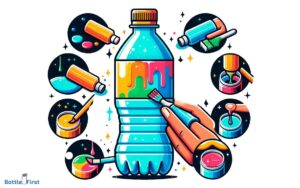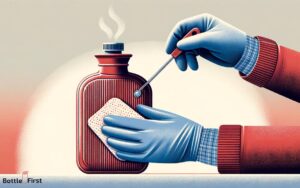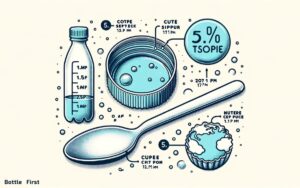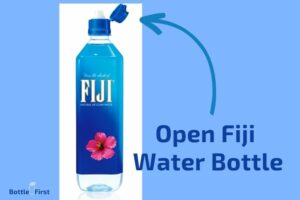Water Bottle Problems And Solutions: The Ultimate Guide
Water bottle problems mainly involve issues like potential contamination, plastic degradation, and environmental impact.
These are solvable by selecting BPA-free bottles, opting for durable materials like stainless steel, ensuring proper cleaning, and choosing reusable over single-use bottles.
Water bottles, particularly plastic ones, often pose health and environmental concerns. Some of these bottles contain BPA, a harmful chemical that can leach into the water, especially under high heat conditions.
Plastic bottles also degrade over time, leading to microplastics in our water sources. Furthermore, disposable plastic bottles contribute significantly to environmental pollution.
Opting for BPA-free water bottles and those made from durable materials like stainless steel or glass can prevent potential health risks.
Regular cleaning helps maintain hygiene, while choosing a reusable bottle instead of a single-use one significantly reduces plastic waste, contributing to a healthier environment.
Common Water Bottle Problems and Solutions
| Water Bottle Problems | Solutions |
|---|---|
| Bottle Leaks | Ensure the cap or lid is tightly secured. If the problem persists, consider replacing your bottle. |
| Foul Smell/Taste | Clean the water bottle thoroughly. Use a solution of vinegar and water for a deeper cleaning. |
| Insufficient Insulation | Use insulated water bottles to keep your beverages at the desired temperature. |
| Mold Growth | Regular and thorough cleaning. Use a mixture of bleach and water for serious cases. |
| Difficulty in Cleaning | Use a long brush designed for water bottles or consider buying a dishwasher-safe model. |
| Easily Damaged | Invest in a high-quality, durable water bottle, preferably those made with stainless steel. |
| BPA (chemical) Exposure | Choose BPA-free water bottles. |
| Denting or Scratching | Use a water bottle cover or sleeve for extra protection. |
| Water not staying Cold/Hot | Use an insulated water bottle and make sure the lid is closed properly. |
| Misplacement or Loss | Consider using a bottle with a strap or handle for easy carry and less chances of leaving it behind. |
Key Takeaway
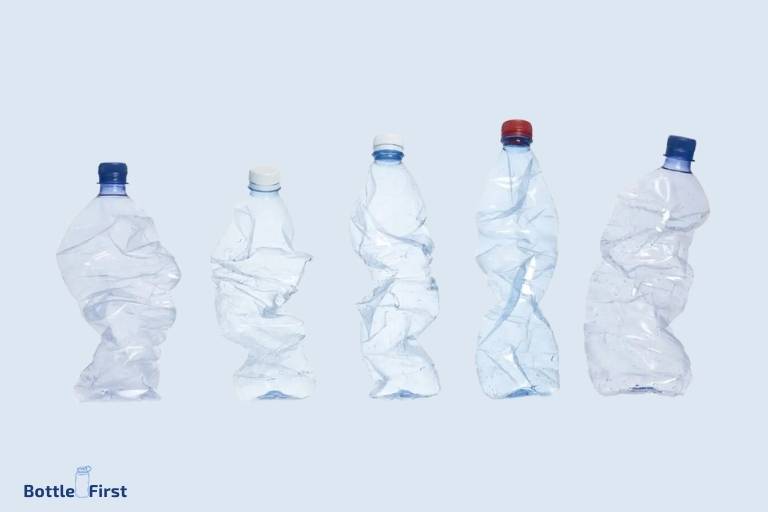
Five Facts About Water Bottle Problems and Solutions
Understanding The Challenges Faced With Water Bottles
Water bottles are a convenient and essential tool for staying hydrated throughout the day. However, like any other product, they come with their fair share of challenges.
In this section, we will explore some of the common problems encountered with water bottles and offer solutions to overcome them.
Leaking And Dripping Issues
Leaking and dripping can be a frustrating problem when it comes to water bottles. Nobody wants to deal with a wet backpack or purse.
Here are some key points to consider:
- Check the lid: Ensure that the lid is properly secured and tightened to prevent any leaks. Consider investing in a water bottle with a secure locking mechanism.
- Inspect the seal: Regularly inspect the seal or gasket on your water bottle for any signs of wear and tear. If it appears worn, it may be time to replace it.
- Avoid overfilling: Overfilling your water bottle can increase the likelihood of leaks. Leave some space at the top to allow for expansion when the liquid heats up.
Plastic Taste And Odor Problems
One of the main drawbacks of using plastic water bottles is the potential for a noticeable plastic taste or odor.
Here’s what you need to know:
- Choose bpa-free bottles: Look for water bottles that are specifically labeled as bpa-free. Bpa is a chemical commonly found in plastics that can contribute to off-putting tastes and odors.
- Opt for stainless steel or glass: Consider alternatives to plastic, such as stainless steel or glass bottles. These materials do not impart any flavors or odors, ensuring a clean and enjoyable drinking experience.
- Clean regularly: Regularly clean your water bottle with mild soap and warm water to eliminate any lingering tastes or odors. Additionally, you can use a mixture of vinegar and water for a deeper clean.
Difficulty In Cleaning And Maintenance
Cleaning and maintaining water bottles can sometimes feel like a daunting task. However, with the right approach, it can be a hassle-free process.
Consider the following:
- Invest in a bottle brush: A bottle brush with bristles designed to reach every nook and cranny of your water bottle can make cleaning easier and more efficient.
- Disassemble when possible: If your water bottle has removable parts, such as a lid or straw, make sure to disassemble them before cleaning. This allows for a thorough clean and prevents any residue buildup.
- Air drying is key: After cleaning, allow your water bottle to air dry completely before using or storing it. This helps to prevent the growth of mold and mildew.
By understanding and addressing these challenges, you can ensure that your water bottle remains an efficient and reliable companion for your hydration needs.
With proper care and maintenance, the benefits of staying hydrated on the go far outweigh the temporary obstacles that may arise.
Stay tuned for the next section where we will delve deeper into other aspects of water bottle usage.
Innovative Designs And Materials For Leak-Proof Bottles
Water Bottle Problems And Solutions
Are leaky water bottles driving you crazy? We’ve all been there. You think you’ve found the perfect water bottle, but then it starts leaking and ruining everything in your bag.
Fortunately, innovative designs and materials have come to the rescue, offering leak-proof solutions for your hydration needs.
Double-Walled Vacuum Insulation Technology
Double-walled vacuum insulation technology is a game-changer when it comes to leak-proof bottles.
Here’s why:
- It creates a vacuum-sealed barrier that prevents heat transfer, keeping your cold drinks cold and your hot drinks hot.
- The double walls provide extra insulation, reducing condensation and preventing leaks caused by temperature changes.
- By maintaining the temperature of your beverage, this technology ensures that your water bottle remains leak-proof, eliminating the frustration of damp bags or clothes.
Silicone Sealing Rings For Enhanced Leak Protection
Silicone sealing rings offer a reliable solution to prevent leaks.
Here’s what makes them so effective:
- These flexible rings are designed to create a tight seal between the bottle and the cap, preventing any liquid from escaping.
- The pliable nature of silicone ensures a secure fit, even during rigorous activities or when the bottle is turned upside down.
- Silicone sealing rings are known for their durability and resistance to wear and tear, providing long-lasting leak protection.
Flip-Top And Twist-On Caps With Secure Lock Mechanisms
Flip-top and twist-on caps with secure lock mechanisms are another excellent option to consider for leak-proof bottles.
Here’s why they’re worth your attention:
- These caps feature a secure lock mechanism that prevents accidental opening or spilling. No more unexpected leaks in your bag or car!
- The flip-top and twist-on designs provide a smooth open-and-close action, making it easy to access your drink while ensuring a tight seal when closed.
- Many of these caps are also designed with built-in handles or carrying loops, adding convenience to your on-the-go lifestyle.
Remember, when choosing a leak-proof water bottle, these innovative designs and materials can make a significant difference in your daily hydration routine.
No more worrying about leaks and messes. Enjoy your drinks without any hassle and keep everything in your bag safe and dry.
So, next time you’re in the market for a water bottle, look out for those featuring double-walled vacuum insulation technology, silicone sealing rings, and flip-top or twist-on caps with secure lock mechanisms.
These advancements in design and materials ensure a leak-proof experience, allowing you to stay hydrated without any frustrating mishaps.
Eliminating Plastic Taste And Odor In Water Bottles
Water Bottle Problems And Solutions
Have you ever experienced that unpleasant plastic taste and odor when drinking from a water bottle? It can be a frustrating problem that often leads to wastage of otherwise perfectly good bottles.
Luckily, there are solutions available to eliminate this issue and ensure a refreshing and pleasant drinking experience.
In this section, we will explore three effective ways to get rid of plastic taste and odor in water bottles.
Choosing Bpa-Free And Food-Grade Materials
- Opt for bpa-free water bottles: Bisphenol a, commonly known as bpa, is a chemical used in the production of certain plastics that can leach into water and affect its taste and odor. By selecting water bottles made from bpa-free materials, you can eliminate the risk of consuming this unpleasant chemical.
- Look for food-grade materials: Ensure that the water bottle you choose is made from food-grade materials such as stainless steel or glass. These materials are non-toxic and do not impact the taste or odor of the water, providing a clean and pure drinking experience.
Activated Charcoal Filters For Purification
- Harness the power of activated charcoal filters: Activated charcoal filters are highly effective in removing impurities, including plastic taste and odor, from water. These filters work by trapping contaminants through a process called adsorption, leaving you with clear and crisp-tasting water.
- Replace filters regularly: To ensure optimal results, it is essential to replace activated charcoal filters as per the manufacturer’s recommendations. This will maintain the effectiveness of the filter and prevent any lingering taste or odor from seeping into the water.
Infusing Natural Flavors To Mask Plastic Taste
- Experiment with natural flavor infusions: Enhance the taste of your water by infusing it with natural flavors such as fruits, herbs, or vegetables. By adding slices of citrus fruits like lemon, lime, or oranges, or a few sprigs of mint or cucumber, you can mask any residual plastic taste, leaving behind a refreshing and delicious drink.
- Let it steep: After adding the desired flavorings to your water bottle, allow it to steep for a few hours or overnight in the refrigerator. This will allow the natural flavors to infuse into the water, creating a more pronounced and enjoyable taste.
Eliminating plastic taste and odor in water bottles is essential to promote a positive drinking experience.
By choosing bpa-free and food-grade materials, using activated charcoal filters, and infusing natural flavors, you can bid farewell to any unpleasant aftertastes and enjoy refreshing water wherever you go.
So, say goodbye to those pesky plastic problems and savor the pure and clean taste of water in your bottle.
Easy Cleaning And Maintenance Tips For Water Bottles
Water Bottle Problems And Solutions
Having a clean and well-maintained water bottle is essential for ensuring the safety and quality of the water you drink.
Neglecting proper cleaning and maintenance can lead to unpleasant odors, residue buildup, and even the growth of harmful bacteria.
Here are some easy tips to keep your water bottle sparkling clean and in great condition.
Using Bottle Brushes For Thorough Cleaning:
- Choose a bottle brush specifically designed for cleaning water bottles. These brushes typically have long handles and soft bristles that can reach even the narrowest corners.
- To clean the interior of the bottle, use warm soapy water and gently scrub the bottle with the brush. Pay special attention to the cap and the mouthpiece if applicable.
- Rinse the bottle thoroughly with tap water to remove any soap residue.
- For stubborn stains or odors, you can add a mixture of baking soda and water to the bottle and let it sit for a few minutes before scrubbing and rinsing.
Dishwasher-Safe Features And Considerations:
- Check if your water bottle is dishwasher-safe. Many modern water bottles are designed to be dishwasher-friendly, saving you time and effort.
- Before placing your bottle in the dishwasher, make sure to remove any detachable parts such as the cap, straw, or silicone rings, following the manufacturer’s instructions.
- Ensure that the water bottle is placed securely on the top rack of the dishwasher to prevent any potential damage.
- Be mindful of the temperature setting. High heat can warp or damage certain bottle materials, so it’s best to opt for a lower temperature or use a gentle cycle if available.
Regular Maintenance And Sanitization Techniques:
- Wash your water bottle daily with warm soapy water. This helps prevent the buildup of bacteria and keeps your bottle fresh and ready for use.
- After washing, allow your bottle to air dry completely before sealing it. Trapped moisture can create an environment for bacteria to thrive.
- For additional sanitization, you can use a mixture of equal parts water and vinegar or hydrogen peroxide. Fill your bottle with the solution, let it sit for a few minutes, then thoroughly rinse it out.
- Pay attention to any signs of wear and tear on your water bottle, such as cracks, discoloration, or a loose cap. If you notice any damage, it’s best to replace your bottle to ensure optimal safety.
By following these easy cleaning and maintenance tips, you can extend the lifespan of your water bottle and enjoy clean and refreshing hydration every day.
Remember to stay consistent with your cleaning routine and prioritize the safety of your drinking water.
So, keep your water bottle shining bright and keep yourself hydrated throughout the day!
Eco-Friendly Alternatives To Single-Use Plastic Bottles
Stainless Steel Bottles: Durable And Sustainable Choice
Stainless steel water bottles are an excellent alternative to single-use plastic bottles.
Here are some key points to know about them:
- Durability: Stainless steel bottles are incredibly durable and long-lasting. They can withstand impacts, drops, and rough handling, making them ideal for outdoor activities and sports.
- Sustainability: By choosing a stainless steel bottle, you are actively contributing to reducing plastic waste. These bottles are reusable, eliminating the need for single-use plastic bottles that end up in landfills or oceans.
- Bpa-free: Stainless steel bottles are typically bpa-free, ensuring that your drinking water remains free from harmful chemicals.
- Temperature control: Many stainless steel bottles have insulation properties, allowing you to keep your beverages cold or hot for an extended time. This feature is especially convenient during hot summer days or chilly winter outings.
- Easy to clean: Stainless steel bottles are straightforward to clean and maintain. They are usually dishwasher-safe, saving you time and effort in keeping them hygienic.
Glass Bottles: Aesthetic Appeal And Environmental Friendliness
Glass water bottles offer both aesthetic appeal and environmental friendliness.
Here are the main points to consider:
- Aesthetics: Glass bottles are visually appealing and often come in an array of stylish designs. They can be a fashion statement, adding a touch of elegance to your hydration routine.
- Eco-friendly: Glass is a highly sustainable material. Unlike plastic, glass is chemically inert, meaning it doesn’t leach harmful substances into your drink. Plus, glass is fully recyclable, reducing the environmental impact.
- Taste preservation: Glass bottles do not affect the taste of water or other beverages, ensuring that you get the purest flavor.
- Easy cleaning: Similar to stainless steel bottles, glass bottles are easy to clean and maintain. They are usually dishwasher-safe and don’t retain any odors or flavors from previous drinks.
Collapsible Water Bottles: Compact And Travel-Friendly Solution
Collapsible water bottles provide a compact and travel-friendly solution for staying hydrated on the go.
Here are the key points to know about them:
- Space-saving design: Collapsible bottles are designed to be collapsible when empty, taking up minimal space in your bag or backpack. This feature is particularly useful when traveling or commuting.
- Lightweight: Collapsible bottles are typically made from lightweight materials, making them easy to carry around without adding extra weight to your belongings.
- Versatility: These bottles are not only great for water but can also be used for other beverages like juice or tea. Some models even have built-in filters for purifying water on the spot.
- Leak-proof: Many collapsible bottles come with secure leak-proof lids, ensuring that you can toss them into your bag without worrying about spills or leaks.
- Eco-conscious choice: By opting for a collapsible water bottle, you are actively reducing the demand for single-use plastic bottles. This small change can make a big difference in protecting the environment.
Remember, making the switch to eco-friendly alternatives like stainless steel, glass, or collapsible water bottles not only benefits the planet but also improves your hydration habits.
Choose the option that best suits your lifestyle and preferences and make a positive impact on the environment, one sip at a time.
What Are Some Solutions to Common Water Jug Problems?
Looking for a comprehensive water jug capacity guide? Look no further! Solving common water jug problems starts with choosing the right size. Whether it’s a small jug for personal use or a larger one for a family, finding the appropriate capacity ensures you never run out of water. Additionally, investing in durable materials and leak-proof designs minimizes spillage issues, making your hydration journey a breeze.
FAQ About Water Bottle Problems And Solutions
What Are The Common Problems With Water Bottles?
Common problems with water bottles include leakage, poor insulation, difficult cleaning, and unpleasant odors or tastes.
How Can I Prevent My Water Bottle From Leaking?
To prevent water bottle leakage, ensure proper lid closure, check for damaged seals, and store the bottle upright.
What Is The Best Way To Clean A Water Bottle?
The best way to clean a water bottle is to use warm soapy water, a bottle brush, and regular cleaning to avoid bacterial growth.
How Can I Remove Unpleasant Odors Or Tastes From My Water Bottle?
To remove unpleasant odors or tastes, wash your water bottle with a mixture of vinegar and water, then rinse thoroughly.
How Do I Choose A Water Bottle With Good Insulation?
When selecting a water bottle with good insulation, look for double-wall construction and vacuum-sealed technology for temperature retention.
Conclusion
To sum up, the problems associated with water bottles are all too common in our daily lives.
From leaks and spills to the presence of harmful chemicals, it is crucial to address these issues for the sake of our health and the environment.
By investing in high-quality, bpa-free water bottles and regularly maintaining them, we can prevent many of the common problems that arise.
It is also important to avoid leaving water bottles in extreme temperatures and to clean them properly to avoid the growth of bacteria.
Being aware of the potential issues and implementing simple solutions can go a long way in ensuring we have access to clean, safe, and eco-friendly hydration.
Remember, a little care and attention can make a big difference in the lifespan and functionality of our trusty water bottles.
So, let’s drink up and stay hydrated, while also being mindful of our impact on the planet.


